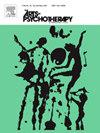Art therapists' experiences of countertransference with clients with intellectual disabilities
IF 1.5
3区 心理学
Q3 PSYCHOLOGY, CLINICAL
引用次数: 0
Abstract
Objective
This study examined art therapists' countertransference experiences when working with clients with intellectual disabilities.
Method
A mixed methods design was used, involving process diaries, RAP (Relational Anecdotes Paradigm) interviews, and the Therapist Response Questionnaire (TRQ). Seven art therapists working with clients with mild to moderate intellectual disabilities provided data from nine treatments.
Findings
Four primary countertransference themes emerged: Parental/Protective, Helplessness/Ambivalence, Joy/Satisfaction, and Compassion/Sadness. The Parental/Protective theme was the most frequent. The theme of Helplessness/Ambivalence reflected doubts and professional dilemmas. Joy/Satisfaction was reported to emerge from successful interactions, whereas Compassion/Sadness was tied to clients' struggles.
Conclusion
The findings highlight the complex and multifaceted nature of countertransference in art therapists working with clients with intellectual disabilities. These countertransference reactions, encompassing both positive and negative emotions, play a crucial role in the therapeutic relationship. It is suggested that by acknowledging and constructively engaging with these reactions, therapists can foster stronger therapeutic relationships.
艺术治疗师对智障客户的反移情经验
目的探讨艺术治疗师在治疗智障患者时的反移情体验。方法采用混合方法设计,包括过程日记、关系轶事范式(RAP)访谈和治疗师反应问卷(TRQ)。七位艺术治疗师为轻度到中度智力障碍的客户提供了九种治疗的数据。四个主要的反移情主题出现了:父母/保护、无助/矛盾、喜悦/满足和同情/悲伤。父母/保护的主题是最常见的。无助/矛盾的主题反映了怀疑和职业困境。据报道,快乐/满意来自于成功的互动,而同情/悲伤与客户的挣扎有关。结论研究结果突出了艺术治疗师在治疗智障客户时反移情的复杂性和多面性。这些反移情反应,包括积极情绪和消极情绪,在治疗关系中起着至关重要的作用。有人建议,通过承认并建设性地参与这些反应,治疗师可以培养更牢固的治疗关系。
本文章由计算机程序翻译,如有差异,请以英文原文为准。
求助全文
约1分钟内获得全文
求助全文
来源期刊

Arts in Psychotherapy
Multiple-
CiteScore
3.20
自引率
11.10%
发文量
66
期刊介绍:
The Arts in Psychotherapy is a dynamic, contemporary journal publishing evidence-based research, expert opinion, theoretical positions, and case material on a wide range of topics intersecting the fields of mental health and creative arts therapies. It is an international peer-reviewed journal publishing 5 issues annually. Papers are welcomed from researchers and practitioners in the fields of art, dance/movement, drama, music, and poetry psychotherapy, as well as expressive and creative arts therapy, neuroscience, psychiatry, education, allied health, and psychology that aim to engage high level theoretical concepts with the rigor of professional practice. The journal welcomes contributions that present new and emergent knowledge about the role of the arts in healthcare, and engage a critical discourse relevant to an international readership that can inform the development of new services and the refinement of existing policies and practices. There is no restriction on research methods and review papers are welcome. From time to time the journal publishes special issues on topics warranting a distinctive focus relevant to the stated goals and scope of the publication.
 求助内容:
求助内容: 应助结果提醒方式:
应助结果提醒方式:


